
views
Using a Needle and Tweezers
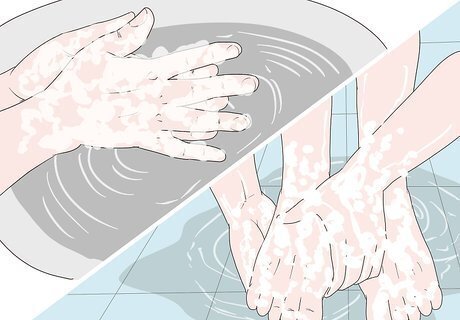
Wash your hands and feet with soap and water to disinfect them. Rinse your hands and feet in clean warm or cold running water. Apply soap and scrub your hands and feet for at least 20 seconds. You can soak the affected foot in warm water if you want to make the skin more pliable, but this is not required. If you choose to do so, fill a container that is big enough for your foot to fit in with warm water and let the foot soak for about 5 minutes.

Dry your hands and feet off gently with a clean towel. Gently pat the affected area dry with the towel so you don’t irritate the wound. It’s important to use a clean towel so you don’t transfer any germs to the area that has the splinter in it. If you don’t have a clean towel, use paper towels instead.
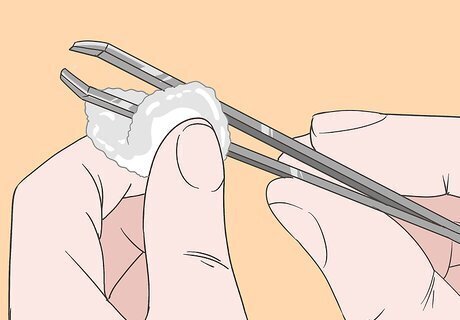
Sterilize a pair of tweezers and a small needle with rubbing alcohol. Pour some rubbing alcohol out onto a cotton swab or a folded paper towel. Rub down a pair of tweezers thoroughly to clean them. Use a fresh cotton swab or paper towel and repeat this for a small needle, such as a sewing needle. Always disinfect any instruments you are going to be using to penetrate your skin to avoid infection.
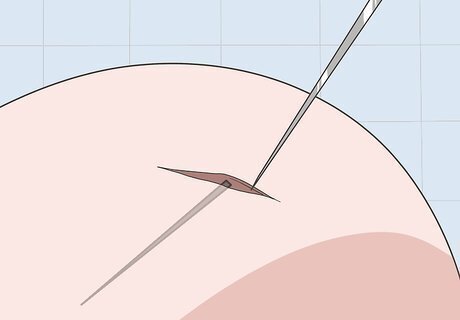
Poke the skin over the splinter with the tip of the needle to open it up. Use the tip of the needle to gently pierce the skin on top of the splinter if the splinter is fully submerged under the skin’s surface. This will open up the skin so you can reach the splinter.Tip: If the splinter is extremely small, use a magnifying glass to see where the tip is under the skin. You can get a friend to help you, since it can be hard to do this all by yourself when the splinter is in your foot. You don’t need to do this if the tip of the splinter is already sticking up above the skin.
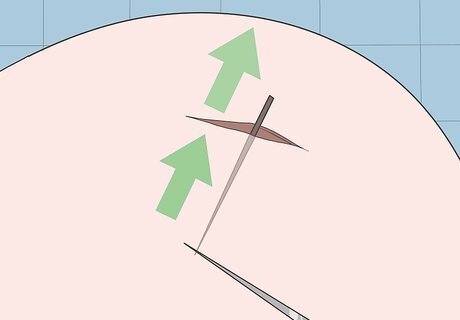
Use the tip of the needle to try and slide the tip of the splinter out. Gently poke the tip of the splinter with the needle and start to slowly slide it up so the tip is above your skin. Pierce a little more of the skin if you can’t reach the tip of the splinter with the needle. If this doesn’t work, don’t worry. You can still try to pull the splinter out with the tweezers or use other methods to try and bring the splinter to the surface first.
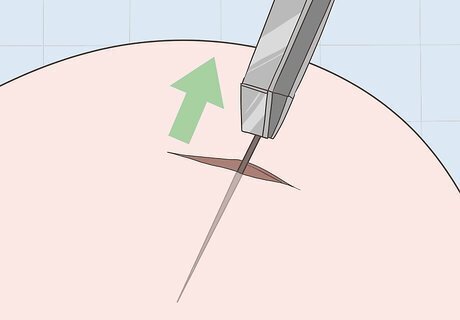
Grab the tip of the splinter with the tweezers and pull it out. Carefully place the prongs of the tweezers over the tip of the splinter and squeeze them closed. Slowly pull out the splinter until it is all the way out of your foot. Avoid pinching the skin while you try to pull the splinter out with tweezers. This can cause it to break into even smaller splinters, making it more difficult to remove. If you can’t get the splinter out after 10-15 minutes of trying with this method, then try using some other methods or consider going to a doctor if the splinter is particularly deep or painful.
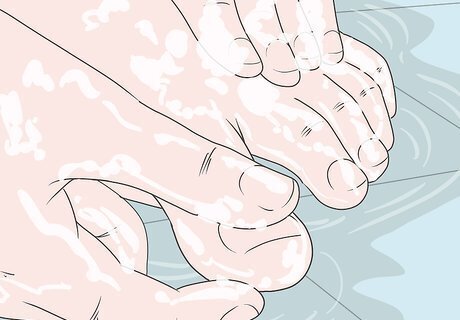
Wash the affected foot with soap and water after the splinter is out. Clean off the area from which you removed the splinter with soap and water to prevent infection. Pat it dry with a clean towel or paper towel. Make sure the area is completely dry so you will be able to stick a bandage to it. You could also pour rubbing alcohol or hydrogen peroxide over the affected area to sterilize it. After washing your foot, you may also apply a layer of antibiotic ointment and cover the area where the splinter was with a band-aid. This will help to promote healing and prevent an infection from developing.
Trying Alternative Removal Methods

Use tape to pull shallow splinters out from feet. Cover the splinter with duct tape or another kind of tape. Rub your fingers over it so it is securely stuck to your foot, then slowly peel off the tape to pull the splinter out. If you can see what angle the splinter went in at, then pull the tape off at the opposite angle to improve the odds of pulling it out. Keep in mind that this only works for small, superficial splinters. If the splinter is below the surface of the skin, you’ll have to use another method to help bring it to the surface.
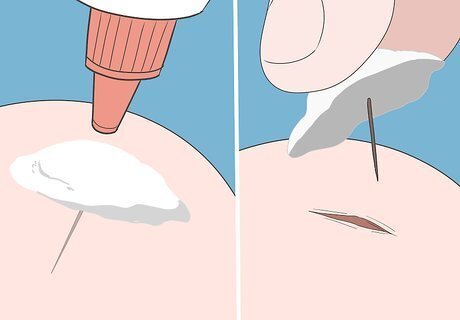
Let glue dry over the splinter and peel it off to get superficial splinters out. Cover the affected area with a small amount of white school glue. Let it dry completely, then peel it off to remove the splinter. This method will only work if you let the glue dry all the way, and only if the splinters are not deep below the surface of your skin.
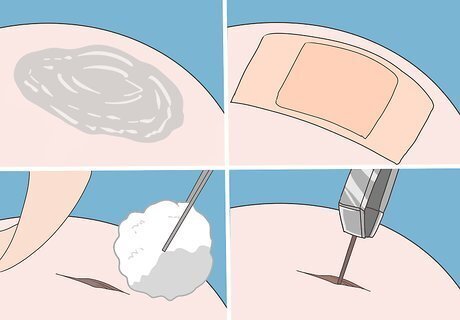
Cover the area in baking soda paste to bring invisible splinters to the surface. Mix about 1/4 tsp (1 gram) of baking soda with enough water to make it into a paste. Cover the splinter with the paste, put a bandage on top, and let it sit for 24 hours. Remove the bandage and carefully wipe off the dried paste to expose the tip of the splinter. Pull it out with tweezers. The baking soda will make the skin swell and push out the tips of invisible splinters so you can reach them with tweezers. If you still can’t see the splinter, then repeat the process for another 24 hours.

Put a potato slice on a shallow splinter for 10-20 minutes to pull it out. Cut a potato into thin slices. Hold a slice against the splinter for 10-20 minutes. Remove the potato slice and check to see if it pulled the splinter out.Tip: You can also try this method with a small piece of banana peel instead of a potato. Stick the inside part of the banana peel against the affected area and secure it with a bandage. Let it sit overnight before you remove it. You can secure the potato slice with 2 bandages if you don’t want to hold it the whole time or if you want to try leaving it longer. Try letting it sit overnight for stubborn splinters. Wash the affected area thoroughly with soap and water or wipe it clean with alcohol or hydrogen peroxide to sterilize it after removing the potato.

Soak the foot in vinegar for 10-15 minutes to expose a deep splinter. Pour white vinegar or apple cider vinegar in a container that’s big enough to hold your foot. Place the affected foot into the vinegar and let it soak for 10-15 minutes, then check to see if the splinter is poking above the surface. Remove it with tweezers. The acidity of the vinegar helps to expose the splinter above the surface of the skin by shrinking the skin around it. If this doesn’t work the first time, try soaking the foot in warm water for 10-15 minutes first, then soak it in vinegar for 10-15 minutes again.




















Comments
0 comment